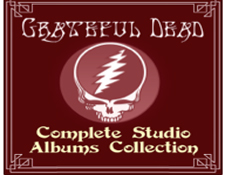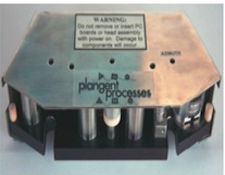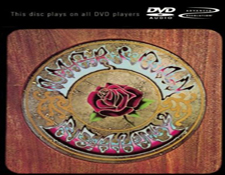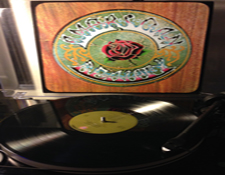It’s the time of year for saving money!
This is one of the harder reviews I’ve ever attempted: listening to the wondrous new HDTracks download of The Grateful Dead’s American Beauty in 192 kHz, 24-bit resolution, one of the first beneficiaries of the new Plangent processes on the market. Now, it would be very easy to talk about this technology and get caught up in all manner of audiophile tech speak which, at the end of the day (from my vantage point), is often lost on a great many people outside of those of you readers with super high end systems or engineering degrees. So, to set realistic expectations, I’ll leave that sort of reviewing to other folks who do it much better than I and who have that sort of gift for more genuine scientific scribesmanship (if you will).
 Tooting my own horn a bit, my approach is in many ways it much more challenging, to bring this sort complex technology into a perspective which might appeal to a wider, mainstream audience. This is part of what I’m known for in the communications world, by the way. You see, over the years in my work as a marketing communications and PR consultant — largely for entertainment related technologies from the consumer and professional electronics industry — I’ve demonstrated a knack for being able to convey the essence of very complex technologies in a manner that the everyman can understand. I have to find language that so called Average Joe’s like you and me — people who have “good” systems and like “good sound” but perhaps don’t have space or budget for the uber-audiophile systems of our dreams — can grok.
Tooting my own horn a bit, my approach is in many ways it much more challenging, to bring this sort complex technology into a perspective which might appeal to a wider, mainstream audience. This is part of what I’m known for in the communications world, by the way. You see, over the years in my work as a marketing communications and PR consultant — largely for entertainment related technologies from the consumer and professional electronics industry — I’ve demonstrated a knack for being able to convey the essence of very complex technologies in a manner that the everyman can understand. I have to find language that so called Average Joe’s like you and me — people who have “good” systems and like “good sound” but perhaps don’t have space or budget for the uber-audiophile systems of our dreams — can grok.
Thus developments like this from Plangent Processes are all the more important as they can make our every day listening experience much better, appreciable even on fairly pedestrian (by audiophile standards) gear.
The Plangent process is both a fascinating technology and service created by a fellow from the Northeast named Jamie Howarth. It was reviewed previously on Audiophilereview.com by my editor Steven Stone, which I wholeheartedly encourage you to read as it explains the technology in great detail.
Now, with no disrespect to my editors, I’ll pull a quote (admittedly out of context) from that article to try to bring you into the universe of the recording process which we’re going to explore; “Plangent Processes does nothing but re-conform the existing waveform to a much more highly accurate timebase, shifting it back to the shape it took on before the tape mechanism distorted its timing.”
Got that? Immediately, its complex stuff.
That said, perhaps consider this somewhat simpler explanation: most professional recording and playback devices are inherently imperfect and can — and will — mess up the sound of even the finest recordings in many ways well before it gets to you, the listener, as an LP or a CD or download. There are certain anomalies inherent in the process of making recorded sounds which can alter and — essentially — degrade the sound from the way it was when first performed live. Plangent Processes has figured out a way to correct those problems resulting in dramatically improved sound playback.
 Many of us, when buying our own audio playback gear, have learned to pay attention to the somewhat cryptic numbers on the so-called “spec sheet” which measure things like “total harmonic distortion” and “wow and flutter” and so on to. We want to make sure that on our end we are playing back the music in as pristine a manner as possible.
Many of us, when buying our own audio playback gear, have learned to pay attention to the somewhat cryptic numbers on the so-called “spec sheet” which measure things like “total harmonic distortion” and “wow and flutter” and so on to. We want to make sure that on our end we are playing back the music in as pristine a manner as possible.
We don’t want our gear to mess up the sound of our spiffy Mobile Fidelity LPs and such.
Those same kinds of “specs” we consumers worry about impact the original recording process and are among the many concerns engineers and artists have when creating a new album or single. Consider the fact that no matter how good a recording you the consumer may be listening to, what you are hearing isn’t really quite exactly what the artists had intended you to hear. Inevitably, things get in the way subtly but significantly altering the sound so that on playback it doesn’t sound just like the actual performance.
Its like the difference between watching a sunset or looking at a photo of one…
And that is kind of where the Plangent process comes in to play, to get the sound that much closer to that original performance as it was laid down on tape…
Now, over the years many famous recordings we know and love have been improved in various and sundry ways, from Miles Davis’ Kind of Blue being finally presented in its proper speed to Duke Ellington’s legendary 1956 performance at Newport being presented in Stereo for the first time.
]]>One factor that has not been dealt with effectively is the issue of “wow and flutter.” These are the sonic anomalies in a recording caused by subtle-but-very-significant variations in tape speed and how the physical tape passes along the heads of the tape machine. In general, the lower the wow and flutter the better and more accurate the recording.
 Plangent Processes answers the question: what if you could virtually eliminate the effects of said “wow and flutter” that happens when you play back a master tape to transfer it to the digital domain. Wouldn’t it be great to be able to eliminate that unwanted anomaly which we know has been altering the sound of many of our favorite albums? Now, we get to hear — essentially — the music as it sounded when it was mixed.
Plangent Processes answers the question: what if you could virtually eliminate the effects of said “wow and flutter” that happens when you play back a master tape to transfer it to the digital domain. Wouldn’t it be great to be able to eliminate that unwanted anomaly which we know has been altering the sound of many of our favorite albums? Now, we get to hear — essentially — the music as it sounded when it was mixed.
What if you could correct for alterations made to the music from stretched tape stock — yes, recording tape stretches, especially over time and repeated use in mixing and mastering — wouldn’t that be pretty amazing to get rid of those sonic warbles? Plangent Processes comes to the rescue again!
How Plangent Processes pulls off its voodoo wonderment is beyond the scope of this review (again, please read Steven Stone’s aforementioned article) but the point is that this is a very welcome modern day alchemy that is now being embraced by some major entities in the music world who care about sound. The Grateful Dead, Queen and Bruce Springsteen are among the first to dive into widespread usage of the technology and the initial results are pretty spectacular.
How it actually sounds is also difficult as hell to describe in words!
For this initial review, I’m going to just focus on this one Grateful Dead album, American Beauty. HDTracks.com has made available the ENTIRE Grateful Dead’s catalog — all of which has been painstakingly restored via Plangent Processes — available as a collective virtual “boxed set.” Yeah, that is a huge, daunting undertaking, but it sounds so sweet.
For the first time you are hearing these seminal recordings essentially sans wow and flutter and a number of other anomalies.
What does that sound like, you rightly ask?
Well, there are lots of newly apparent little details (which add up to a greater collective whole) that were blurred over in earlier versions. For the purposes of this review I compared this HDTracks download — remastered by Dave Glasser of Airshow — to the CD version that came with The Golden Road boxed set (as mastered by Joe Gastwirt at Ocean Way Digital), the recent 180-gram vinyl LP reissue on Rhino/Warner Brothers Records and the 2002 DVD Audio version (with its high resolution 96 kHz / 24-bit stereo mix option).
I’ll start here: American Beauty as first recorded by engineer / producer Steve Barncard always did sound great and the original mastering was solid. It could have sounded even better, however. The transfers through the hardware and post processing added sonic anomalies.
That the HDTracks download version sounds better than ever is a pretty astonishing accomplishment given this is one of the most revered recordings of acoustic-flavored rock out there.
Its all in the details. I first noticed that the sound on the HDTracks download was somehow tighter and more accurate. But to just say that is too vague and just too much audiophile-speak for me.
A song like “Friend of the Devil” shows a lot more detailing of individual instrument sounds. As a musician I know what it sounds like to pluck a guitar string and specifically how that sounds coming through headphones and monitors in the studio. So this version sounds much more like if you were sitting there in the studio with Jerry Garcia and he started playing “Friend of the Devil” for you. It’s that direct.
 Then there are more visual things (if you will) I can describe, such as on the outro to “Till The Morning Comes,” where I’d all but forgotten about the little bells that ride the tune out into the sunset there at the end. When I went back to listen to the CD I could see why I’d forgotten about it — the bells are audibly going in and out — mostly out — of the mix on that fade out. It is a little better on the LP and a bit more steady still on the DVD Audio Disc but on the Plangent Proceeds HDTracks download the ringing sound is overall much more apparent, consistent and realistic. It is also no longer buried, yet does not feel out of place or awkward in the mix.
Then there are more visual things (if you will) I can describe, such as on the outro to “Till The Morning Comes,” where I’d all but forgotten about the little bells that ride the tune out into the sunset there at the end. When I went back to listen to the CD I could see why I’d forgotten about it — the bells are audibly going in and out — mostly out — of the mix on that fade out. It is a little better on the LP and a bit more steady still on the DVD Audio Disc but on the Plangent Proceeds HDTracks download the ringing sound is overall much more apparent, consistent and realistic. It is also no longer buried, yet does not feel out of place or awkward in the mix.
Its the difference between a little “dink” and a distinct “ding” — now the bell rings true.
In speaking with Plangent Processes’ Jamie Howarth I asked him about this detail and he affirmed that this is indeed one of the effects of his work. He said that “the reduction in fast flutter means the bell sound rings more purely and perceptually… a more sustained ring.”
So think about it: if a bell recorded on a master tape from 1970 can now audibly and perceptually ring more realistically via the Plangent process, imagine all the other details we may have been missed in our favorite recordings. Missed not because they were mastered poorly and not even because they were necessarily recorded poorly. We simply missed them because of the effects of wow, flutter and other related types of distortion inherent in the process of making recordings.
I could go on but at this point I think it is time for you to pick up one of the Plangent Processed-albums that are out there and judge for yourself.
One last thought before I close here: consider that this Plangent process is a hybrid “digital” technology which is making “analog” sound better. If their results continue to enable the two worlds to coexist and make sweet music together happily ever after, won’t that be a great thing? I think so.
I love happy endings.
Mark Smotroff is a freelance writer and avid music collector who has worked for many years in marketing communications for the consumer electronics, pro audio and video games industries, serving clients including DTS, Sega, Sony, Sharp, AT&T and many others. www.smotroff.com Mark has written for EQ Magazine, Mix Magazine, Goldmine/DISCoveries Magazine, BigPictureBigSound.com, Sound+Vision Magazine, HomeTechTell.com and many others. He is also a musician / composer whose songs have been used in TV shows such as Smallville and Men In Trees as well as films and documentaries. www.ingdom.com Mark is currently rolling out a new musical he’s written: www.dialthemusical.com.






